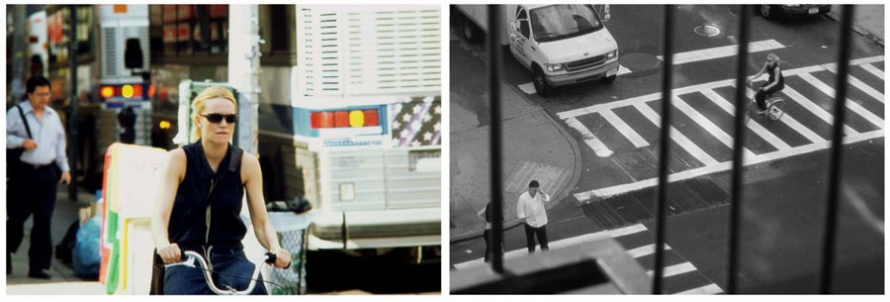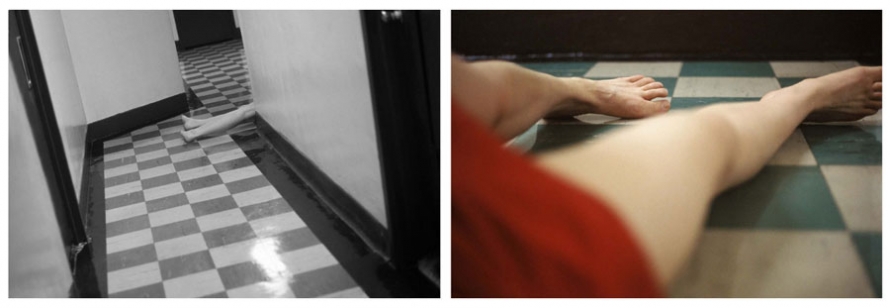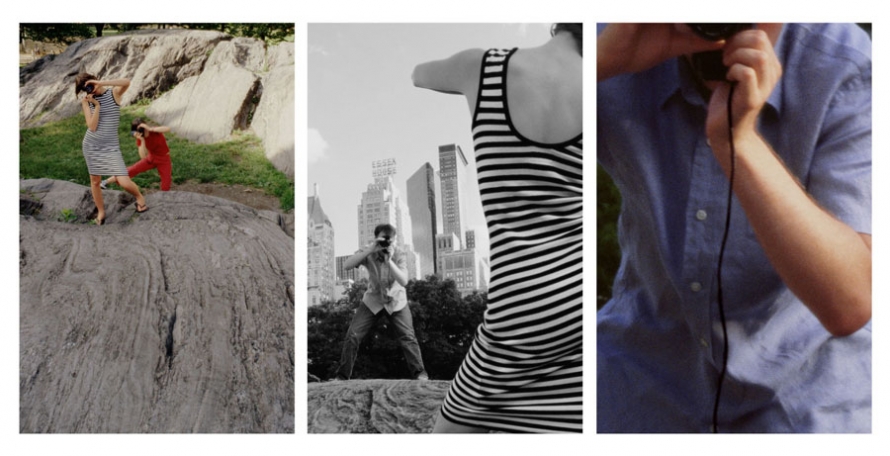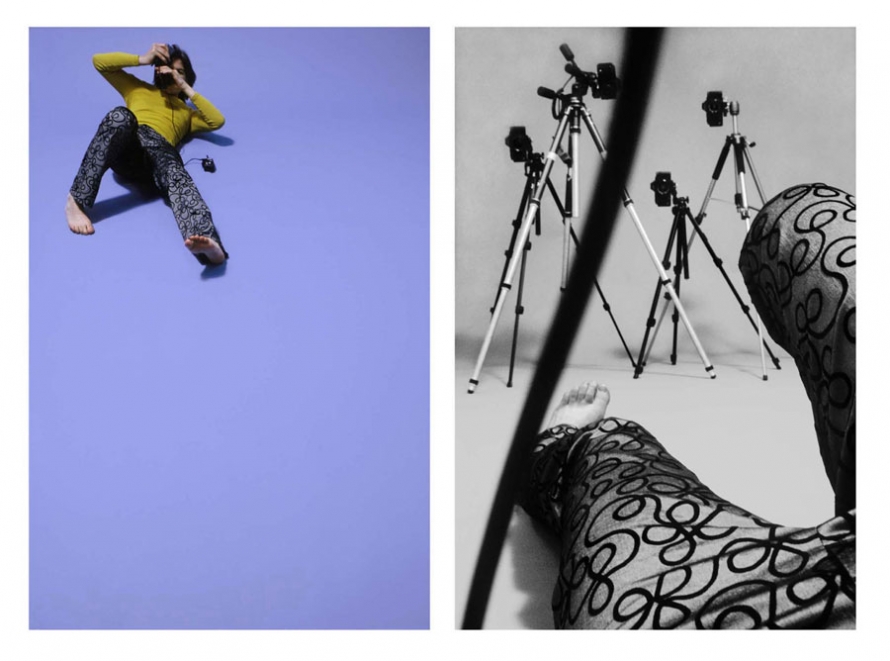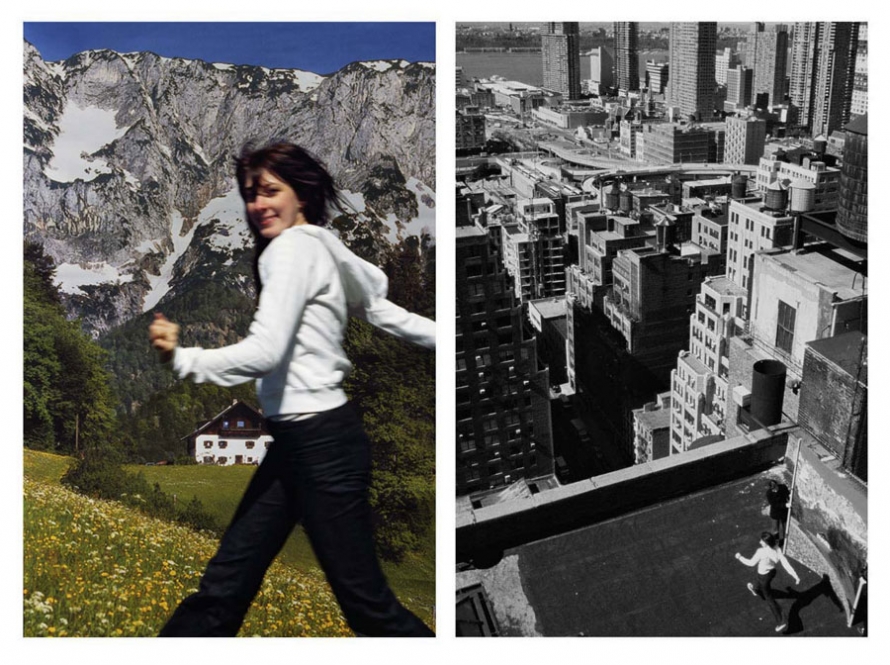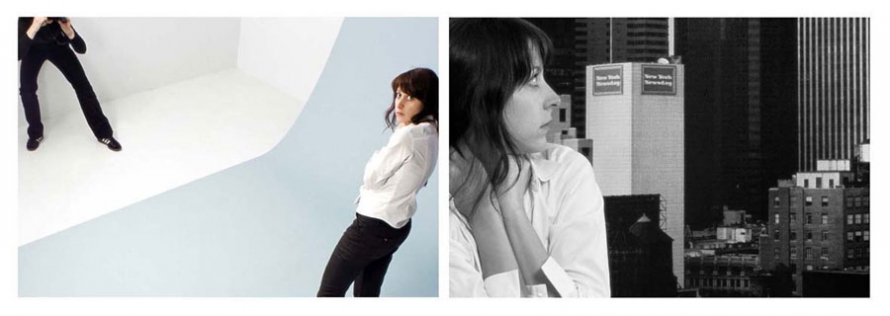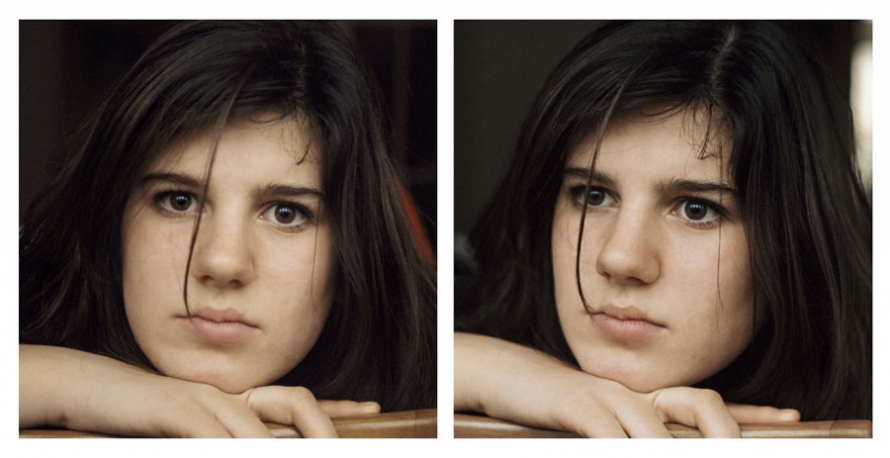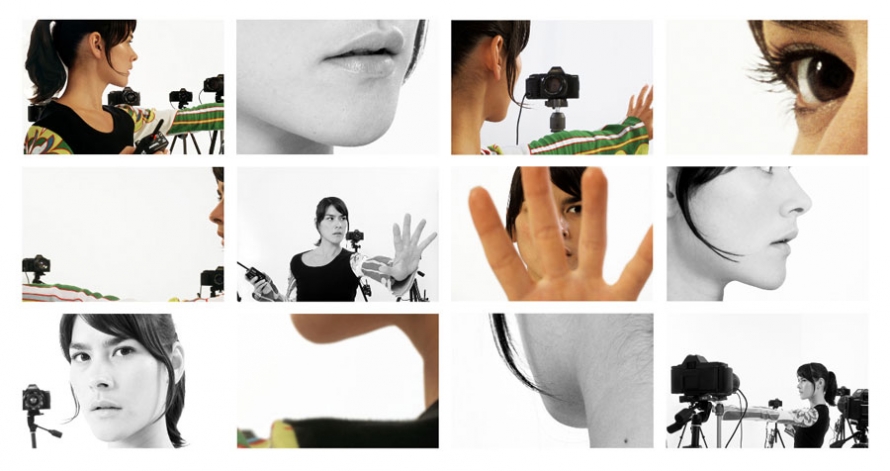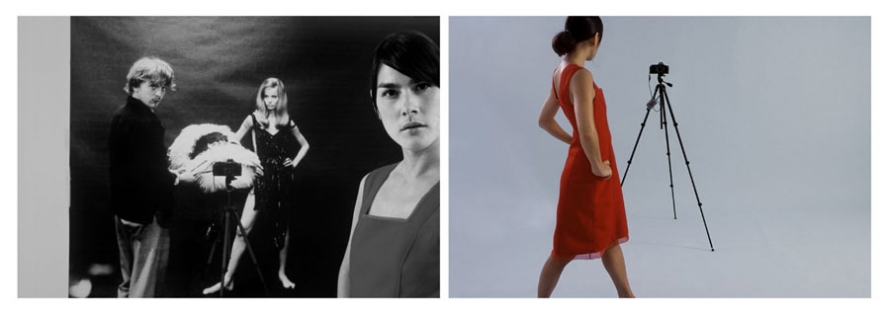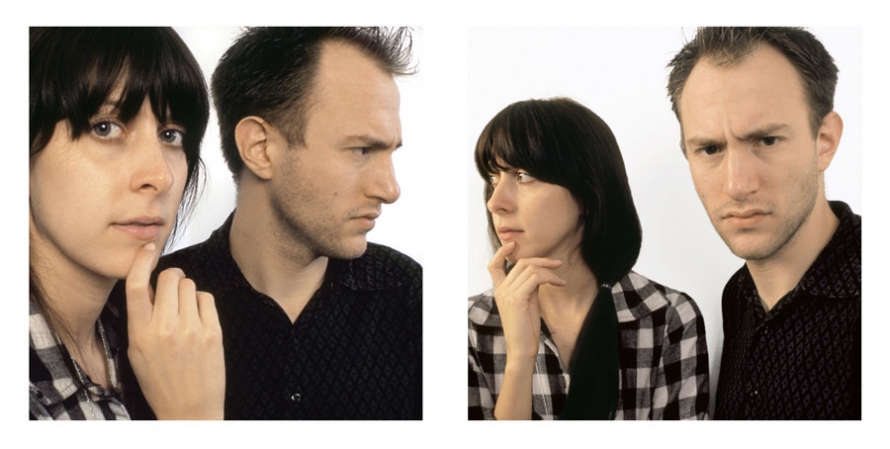When experienced from many different perspectives, is the instant when a photograph is taken still just a single moment? Barbara Probst’s diptych and triptych photos, taken at the same time from different cameras and points of view, offer multiple versions of a split second. Probst subverts the authority of the lone photograph, but rather than presenting a more comprehensive picture of an event, location, or moment, her work reminds us that even photos are interpretations.
All photos © Barbara Probst, courtesy Murray Guy, New York, all rights reserved.
How do you set up these shots?
When I photograph there are always at least two and sometimes as many as 12 cameras involved. There is no way for me to look through the viewfinder during shooting, since all cameras release at the same time. Therefore, I have to set up the cameras and instruct the models very deliberately to get every camera to frame the scene in the right way. Needless to say, there is “accidentiality” involved, which I enjoy working with. The results are never quite as planned, but usually there’s something I can work with. I am not interested in manipulating images on the computer. My work is based on an investigation of the conditions of photography and its relationship to reality.
When I look at some of your work—like Exposure #35, for example—it doesn’t seem possible that the photos could be the same shot. Do you consider your diptychs or triptychs to be photographs of the same thing? What’s each panel’s relationship to the other or others?
The images of each series are always shot in exactly the same instant. Each series show at least two simultaneous views on one and the same thing from different angles, distances, and contexts. This simultaneity is essential to my work. The relationship of the images is based on it. The simultaneity makes the images comparable. The viewer gets involved in the work by shifting his or her view from image to image —back and forth—and by comparing the images and bundling up the different points of view the images are made from in his or her own point of view. This analytical way of looking leads to questions about perception and raises of doubts about our ability to recognize truth.
The way your work separates a single moment into many seems to undermine the idea that photographs are showing us “what happened.” Do you feel your approach is a more complete or reliable representation than a single image from one camera?
I think my work provides us with the implication that there is no reliable representation of “what happened.” Photography is like language: It provides us with an interpretation depending on the intentions and abilities of the person that told the story or made the photograph.
Why do you show other cameras and tripods in some of your photos?
The camera angles are often overlapping, therefore cameras photograph each other while they are photographing. However, when the cameras are apparent in the images, it unmasks the process of photography, and I am interested in that.
How do you decide which shots to use in the final work?
I usually use pictures from all the cameras that were involved in the shoot. When we are shooting a scene, we shoot a roll of film in all of the cameras simultaneously, shooting the scene over and over until all 36 frames in the rolls are exposed. The result is 36 “moments” from which I try to find the moment that I feel works best, considering the quality of the relationships of the images in the series as well the quality of the images themselves.
Does location or subject play a significant role in your work?
Locations don’t play an overriding role in my work. I am actually not as interested in what I photograph as I am in how I photograph it. So the locations, as well as the models and the clothes, are like tools for me in a work that is more about how we see than about what we see.
How do black-and-white photos differ from color in their effect or significance?
In almost every exposure I have black-and-white images as well as color images. I don’t want to exclude any of them in my work, since my work is about the notion of interpretation. Of course the effects of black-and-white and color images are very different. If you turn a color image into a black-and-white one it can possibly put it back in time 40 years.
Why title your works with exposure numbers?
On one hand, the term “exposure” is a purely technical term in photography and on the other hand, “exposure” implies the revealing and disclosing of something. Both meanings connect to my work. The full title of my works is always “Exposure,” followed by a number, followed by the information of location and time of the shooting. These factual and rigid titles stand in contrast to the fiction and subjectivity that is exposed in my series.
